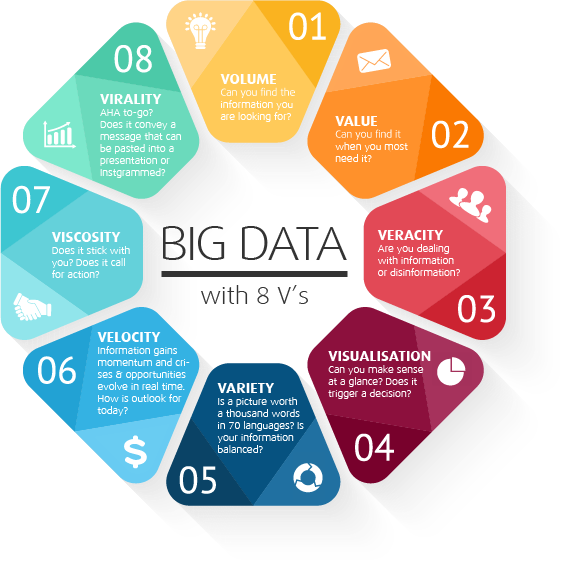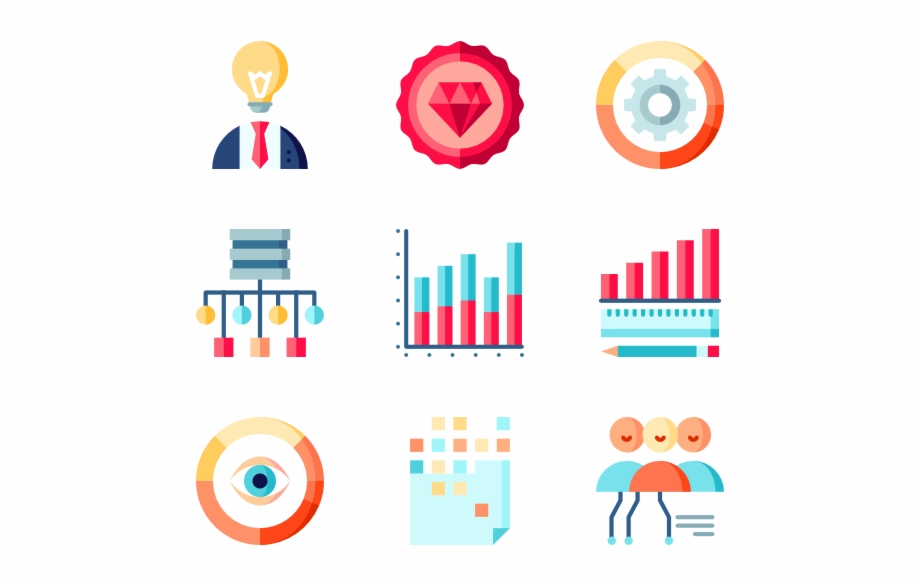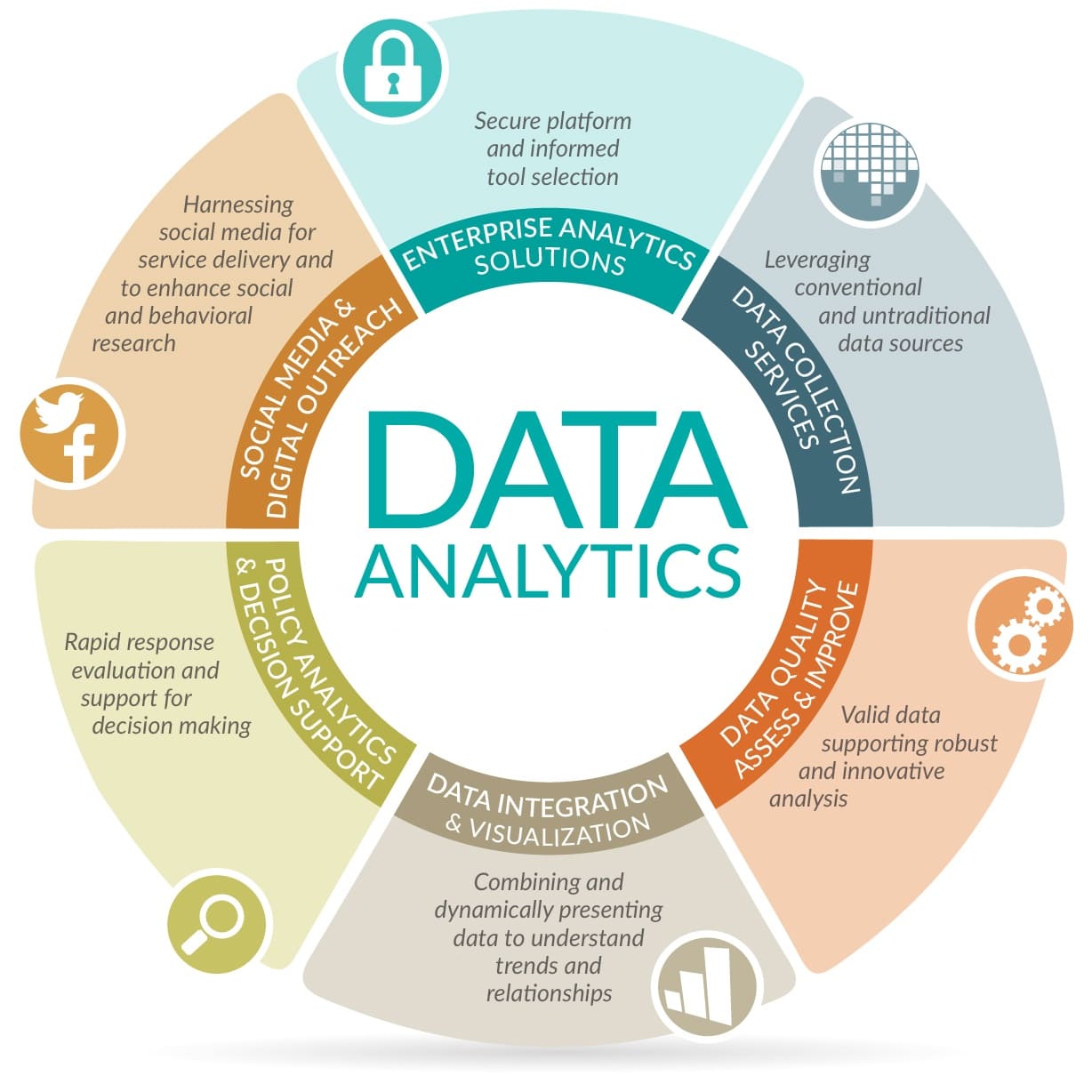
What is Big Data?
The growth in volume of big data is huge and is coming from everywhere, every second of the day. Systems and devices including computers, smart phones, appliances and equipment generate and build upon the existing massive data sets.
But what is big data? Big data is a broad term for both structured and unstructured data sets so large and complex that traditional data processing applications and systems cannot adequately handle them. Big data often powers predictive analytics. Analysis of data sets are used to find new correlations to identify business trends, prevent diseases, combat crime and much more.

Industry analyst, Doug Laney, defined Big Data in terms of the three V's:
Volume:
Terabytes, records, transactions, tables and files.
Velocity:
Batch, near time, real time and streams.
Variety:
Structured, unstructured and semi structured.
Hadoop
Apache Hadoop (aka Hadoop) is open source software used for distributed storage and processing of big data. Hadoop has been packaged and integrated in large distributions (aka distros) by companies such as Cloudera, Hortonworks, MAPR and Pivotal to run big data workloads..

01
Roadblocks to Successful Big Data
Companies often encounter roadblocks when implementing big data projects. These can include budget constraints, lack of IT expertise and risk of platform lock-in..
02
Budget Constraints
Budget constraints and cost are the top reasons why many companies are shying away from deploying big data, according to a study performed by Deloitte. It can be hard to justify investing in new IT infrastructure to process large amounts of data, especially if the business does not yet havean immediate business case..
03
IT Expertise
Processing big data workloads is different than processing typical enterprise application workloads. Big data workloads are processed in parallel, instead of sequentially. IT typically prioritizes business critical workloads and schedules lower priority jobs in batches at night or when there is excess capacity. With big data analytics, many use cases must be run in real-time for live analysis and reaction. This forces IT to change data center policies and learn new tools to create, manage and monitor these new workloads.
04
Platform Lock-In
Companies need to choose the right type of infrastructure to run their applications and data. Procuring hardware takes time. Going into the cloud may be great for a proof of concept, but it carries the risk of platform lock-in, comes with security concerns and incurs tremendous cost at scale. Companies must also decide which Hadoop distribution to select, with Cloudera, Hortonworks, MAPR, and Pivotal all offering competing (and incompatible) architectures. There are many decisions that, once made, make it difficult for a company to pivot later so many companies just delay having the big data conversation
Tokim’s Role in Big Data
The role of infrastructure, whether it’s physical or virtual, is to support applications. This includes traditional business critical applications as well as modern cloud, mobile and big data applications.
Virtualizing big data applications like Hadoop offers a lot of benefits that cannot be obtained on physical infrastructure or in the cloud. Simplifying the management of your big data infrastructure gets faster time to results, making it more cost effective. VMware is the best platform for big data just as it is for traditional applications.

With Tokim, Big Data is;
Simple
Simplify operations and maintenance of your big data infrastructure.
Agile
Get your infrastructure on demand so you can rapidly deliver business value.
Cost Effective
Decrease CapEx cost through cluster consolidation. Decrease OpEx through automation and simple workflows.
Flexible
Try early and often with major big data technologies. Multi-tenancy allows you to run multiple Hadoop distributions on the same virtual machine.
Data and Analytics Services
AI is only as smart as the insights that fuel it. We can help you unlock powerful analytics insights by tapping into data you didn't even know you had.
Discover Your Data's Destiny
Chances are, your business is storing loads of dark data—unused information from transactions, connected devices and other sources. And if you're already using automation and AI technologies, you're likely creating more "data exhaust" than ever. How many opportunities are hidden there
Imagine a steady stream of insights to fuel intelligent technologies; 360-degree customer views to boost relevance and revenue; or faster, smarter decisions to accelerate innovation. Analytics can do that for you.
But if data is fragmented or low quality, it can't be mobilized. You need to reimagine your data supply chains and processes to ensure transparency, trust and accessibility at speed—only then can data be used to maximize your technology and AI investments.
We will tailor your solution with the right talent and technologies to suit your industry and objectives. This is data and analytics in the New—actionable insights that lift performance, resilience and competitive advantage.
Tokim’s team of solution architects and data scientists can be deployed to your location to help you understand what is going on, trace back the problem to the source, and finally, fix the problem. With experts across multiple fields, we will be an extension of your team to help identify and remove inefficiencies, creating a plan to help your organization do more with less. Together we will decrease warranty issues, improve reliability, and enhance your organizational efficiency.
